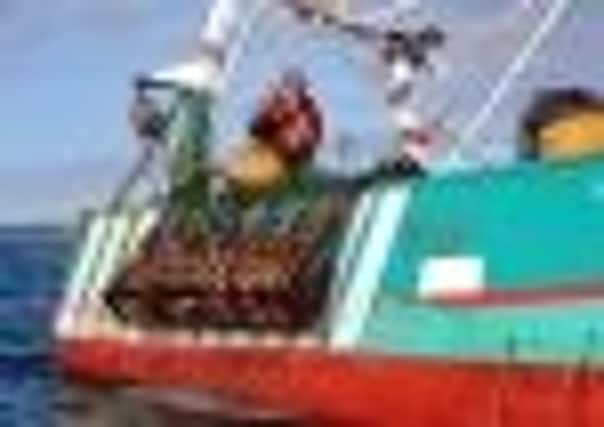Increase in fish stocks targeted by Scots fishermen


A study by fisheries scientists at the NAFC Marine Centre at Scalloway on Shetland has revealed that the stock of North Sea cod - the species which sparked a series of draconian catch restrictions by European Fisheries Ministers - has more than doubled in size in just six years.
And for most other white fish species there have been increases of between 50 and 100 per cent in their spawning stock biomass - the total weight of the fish in a stock that are old enough to spawn.
Advertisement
Hide AdAdvertisement
Hide AdThe findings were hailed today by Scottish fishermen’s leaders as proof that the sacrifices made by the white fish fleet had led to a major recovery in the stocks in Scotland’s traditional fishing grounds.
Leslie Tait, the chairman of the Shetland Fishermen’s Association, declared: “These figures clearly show that far from being in a state of crisis, Scottish fish stocks are in a far healthier state than is often portrayed. This has been achieved through the innovations and substantial sacrifices made by Shetland and Scottish fishermen.
“We hope that everyone will recognise what has been achieved over the last decade. These figures show that consumers can have confidence in eating Scottish fish as a healthy and sustainable part of their diet.”
Bertie Armstrong, chief executive of the Scottish Fishermen’s Federation, also welcomed the findings.
He said: “This report underlines the very real and tangible fish stock recovery that is now occurring around our coasts. It also highlights the dramatic reduction in the amount of fish that are being taken out of the sea.
“It should not be forgotten that this has been achieved at considerable cost to the industry, with the whitefish fleet alone having shrunk significantly since 2000. In addition, our fishermen have adopted a whole range of conservation initiatives, including technical innovations to trawls to reduce discards and the real time area fishing closures to protect spawning and juvenile stocks.”
Mr Armstrong added: “At a time when there is much alarmist and sensationalist misinformation about the state of our fish stocks, this report gives the true story of recovering seas and much reduced fishing effort. It will also give the public the reassurance that they can purchase Scottish seafood safe in the knowledge that it is being sustainably harvested under the careful stewardship of our hardworking fishermen.”
The NAFC report states: “While some stocks declined in size prior to the mid-2000s, the spawning stock biomasses (SSB) of almost all of them have increased since then. In almost all cases the SSB in the most recent year was between 50 per cent and at least 100 per cent higher than the average over the years 2005 to 2007.
Advertisement
Hide AdAdvertisement
Hide Ad“The one exception was haddock, for which the up-turn started later. However, the SSB of haddock in 2012 was at least 40 per cent higher than the average over the years 2009 to 2011 in both the North Sea and West of Scotland.”
At the same time, the fishing mortality rate for most stocks - the proportion of fish that are caught each year - has also fallen sharply.
The report states: “The stock of North Sea cod more than doubled in size between 2006 and 2012 while its fishing mortality rate fell by 43 per cent between 2000 and 2011. In fact the fishing mortality rate for North Sea cod was lower in 2012 than in any year since 1966.
“The overall picture of whitefish stocks provided by these dat is of generally increasing stock sizes and decreasing fishing mortality rates.”
The report also suggests that the revival in the cod stocks may be affecting prawn stocks in Scottish fishing grounds.
The report states: “Both the North Sea and West of Scotland areas have seen general increases in the abundance of prawns. However, while the abundance in the West of Scotland area has continued to increase - albeit with some large fluctuations - that in the North Sea has fallen steeply in the last few years.
“It may be significant that the abundance of cod - a major predator of prawns - has increased substantially in the North Sea in recent years (see Figure 24), but not in the West of Scotland area. Although the relationship was statistically weak, there was some evidence of a negative relationship between the abundances of prawns and cod in the North Sea - that is that prawns were less abundant when cod were more abundant, and vice versa.”
Dr Ian Napier, the author of the report, said: “Two things are evident from this data. Firstly, while some stocks declined in size prior to the mid 2000s, most have increased in size - often substantially - since then. Secondly, fishing mortality rates have declined substantially over the last decade. An interesting point is that the combined size all the whitefish stocks around Scotland has remained at a fairly constant size over the